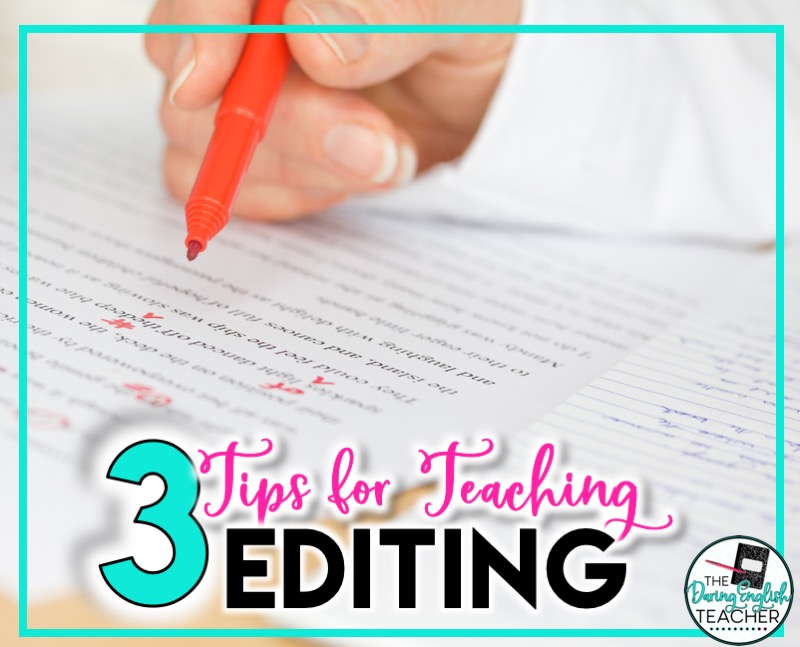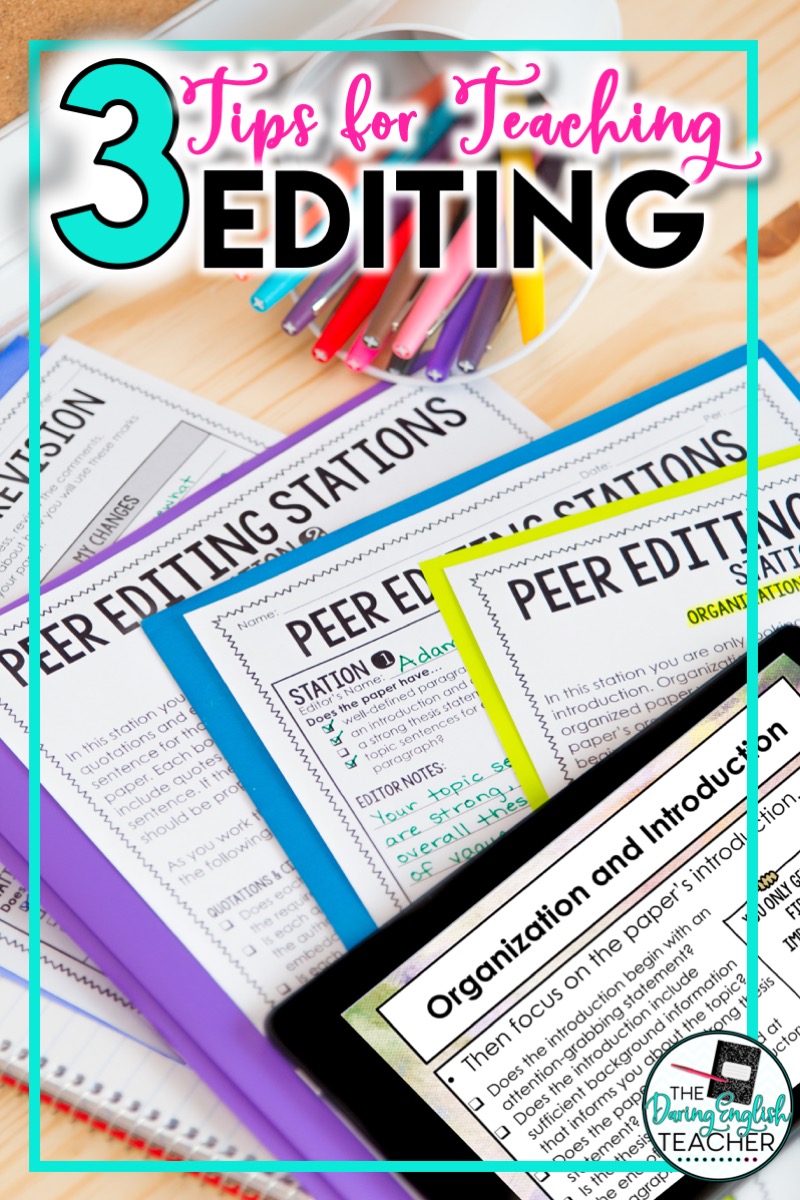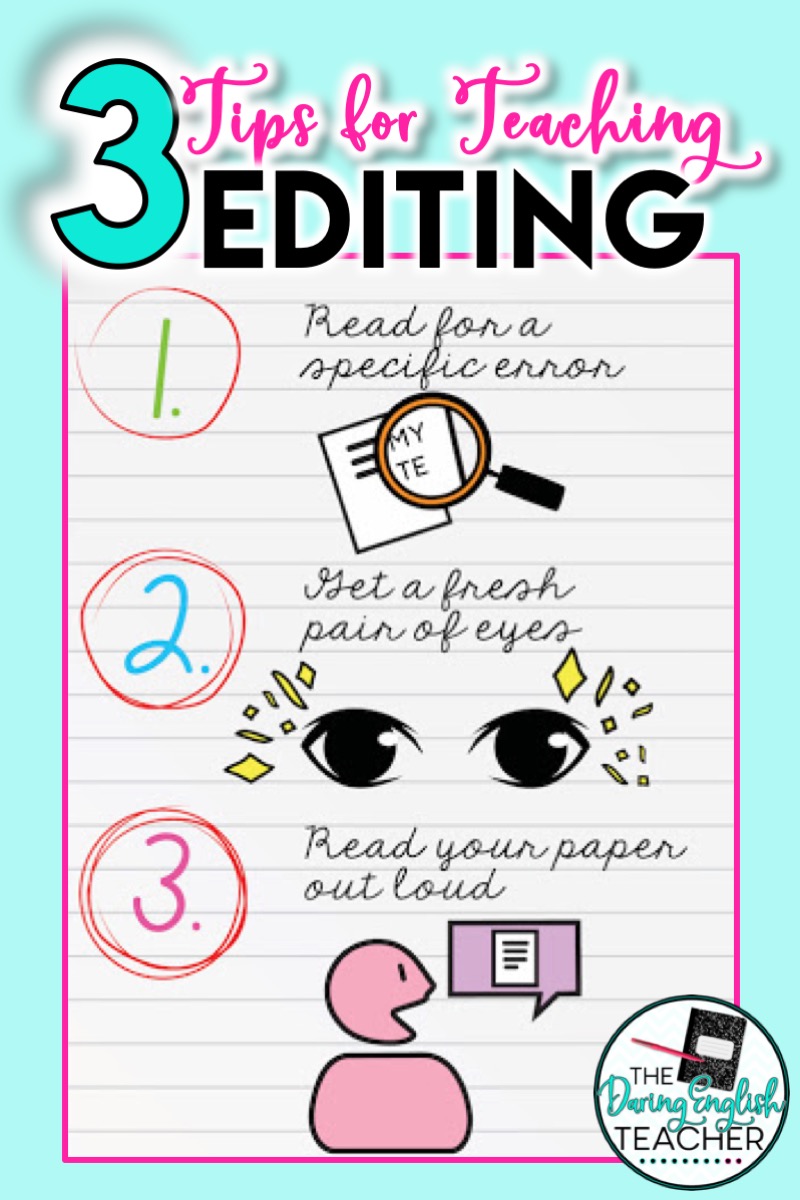As an English teacher, I find few things more cringe-worthy than looking over a student’s paper and seeing they’ve made easily avoidable mistakes. Such errors might include forgetting to capitalize a name, using “your” when they meant “you’re”, or even misspelling the title of the book they spent several days reading. I feel that the reason that most of these problems arise is that students place all their energies in getting the assignment finished and avoid investing time in the art of revising.
Here are three tips I hope you will pass along to your students on how to become better editors and turn in more polished papers.
1. Teaching Students Editing Skills: Read for a specific error
I speak from personal experience from back when I was a student that a lot of grammatical errors are overlooked because students only reread their writing once. They place too much trust in themselves that they can find every error in a single scan. While it is likely they will find the majority of errors that first time, it is equally likely that several mistakes will fly under their radar and lower their grade. To avoid missing out on easy points, students should reread their papers at least three times, each time looking for a specific error. For example, the first read could be for punctuation, the next one for grammar, and a third time for checking that the assignment answers the prompt without tangents. By looking for specific errors, a student’s editing will be more focused and thus more likely to catch simple mistakes.
2. Teaching Students Editing Skills: Get a fresh pair of eyes
I remember writing once for a school assignment -much to my embarrassment- “must of” when I meant “must’ve.” The biggest pitfall with self-editing is that our brains trick us into believing we wrote what we meant to write, essentially making our errors invisible to us. It can be helpful to ask someone you trust to take a look at your paper after you carefully self-edited. It is also beneficial to ask your reader if he/she could follow your line of thinking in answering the assignment prompt and readability. This is where peer editing helps students produce better writing. If you are looking into peer editing strategies, you might want to read these two blog posts: 5 Ways to Foster Effective Peer Editing and Teaching Editing Skills in the Secondary ELA Classroom.
3. Teaching Students Editing Skills: Read your paper out loud
Earlier I mentioned how self-editing can be tricky because our brains have the tendency to read what we meant to write. To avoid such editorial entanglements, instruct students to read their papers aloud to themselves. When a student verbalizes their writing, they are more likely to catch grammatical errors because they won’t sound right when spoken. It might even be beneficial to students to present their essays to the class in the form of a speech as part of an in-class editing session.




